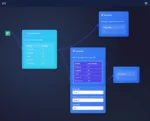In an era dominated by digital interactions and online visibility, decision-makers across industries must gain clarity into social media landscapes to better understand influence, trends, and digital authority. Social media influence mapping has emerged as a powerful methodology, combining advanced analytics and innovative visualization techniques, to shed light on authoritative voices, content trends, and network connections driving strategic decisions. Whether you’re in nonprofit management, corporate marketing, media, or public affairs, mastering the art and analytical science behind influence mapping is a competitive advantage. As you navigate today’s increasingly data-driven environment, visualizing digital authority can unlock key strategic opportunities, optimize engagement, and significantly boost your organization’s decision-making capability and competitive edge.
Why Social Media Influence Mapping Matters for Strategic Decision Making
For organizations striving to make sense of massive volumes of data flowing across social networks, understanding who holds influence and how ideas spread is paramount. Effective Social Media Influence Mapping empowers decision-makers to leverage precision insights and actionable outcomes through clearly visualized digital authority data. This capability is not just limited to commercial businesses—applying business intelligence for nonprofits by identifying influential advocates can yield heightened public awareness, targeted campaigns, and greater impact.
Advanced analytical tools ensure that social influence metrics can be correctly extracted, aggregated, and visualized clearly. Through intuitive analytics dashboards and visually compelling mapping such as network graphs, heatmaps, and streamgraphs for temporal flow visualization, complex influencer relationships and referral flows are turned into accessible, actionable insights. This allows teams to see precisely who influences specific topic areas, allowing tailored communications strategies, and streamlining critical resource allocation.
Ultimately, mapping digital influence transcends social media management; it informs marketing strategies, guides public relations decisions, and shapes executive-level strategic discussions. Comprehensive visibility into digital authority dynamics creates a foundation for confident decision-making, better governance, and faster response to market and cultural shifts.
Key Techniques in Digital Authority Visualization
Social Media Influence Mapping involves an intelligent combination of analytics, data processing, and innovative visualization techniques. Data scientists begin by tapping into robust social APIs capturing real-time user interactions and behavioral insights. Utilizing advanced querying, customized data pipelines, and sophisticated data warehousing mechanisms, teams can aggregate data efficiently through strategic use of analytics frameworks and methodologies, including leveraging databases and MySQL consulting services to manage high-volume, relational data efficiently.
Among critical analytic methods, measuring influence often involves evaluating key metrics—reach, impressions, engagement, and amplification. Effective data architects typically rely heavily on analytics-enabled data pipelines and transformation methodologies. Teams frequently adopt ETL workflows tailored for the complexity of social media contexts, selecting careful solutions based on how to choose the right ETL tool for your business.
You might also utilize advanced calculated data points via SQL and relational analytics for deeper insight. Analysts sample dataset dimensions through aggregate functions in SQL that quickly derive basic statistics such as averages, peaks, valleys, or influential timeframes. Thus, the data catalog becomes much more enlightening to decision-makers seeking key patterns behind influential personas—now quantitatively proven at scale.
Common Pitfalls and Best Practices in Influence Mapping Analytics
Despite technological advancements, not all organization implementations of digital influence analytics hit their intended mark. Common challenges include improper data categorization, lack of clear data governance guidelines, and suboptimal resource scaling. Many teams experience bottlenecks by ignoring big data processing anti-patterns and refactoring strategies. Left unresolved, these technical challenges quickly undermine the visualization validity, resulting in misguided strategic insights.
As influence data grows exponentially, improper pipeline management methodologies risk hindering analytical performance and accuracy. This creates a need for strategic adoption of best practices, such as refining pipeline workflows significantly through methods like pipeline configuration management with environment-specific settings, ensuring relevant and accurate data flow for effective authority visualization. Organizations must also strictly manage data access through auditing activities and clear governance processes—prioritizing transparent standards and leveraging advanced solutions such as granular access log implementation for comprehensive data usage auditing and better overall data management.
Ongoing training, skill upgrades, appropriate selection of analytic visualization tools, and continual governance reviews can entirely shift the balance, enabling teams to extract maximum value from influencer mapping activities by proactively avoiding these pitfalls. Strategic alignment and implementation guarantee accurate assessments, enabling lasting credibility among decision-makers relying on the validity of data-driven recommendations.
Leveraging Adaptive Resources to Optimize Influence Mapping
Social influence data is inherently dynamic, continually evolving with collective user engagements. Organizations unable to adapt to these swift changes often struggle to stay competitive. Embracing robust infrastructure built on adaptive data processing frameworks unlocks the necessary agility. Approaches such as adaptive parallelism in data processing allow your data pipelines to scale dynamically, allowing rapid, effective responses to influxes of data or complex queries concerning user interactions and authority dynamics.
Deploying cloud-based solutions with elastic scalability also ensures stability and performance while mapping large influencer networks. Intelligent scalability helps analysts pinpoint real-time shifts in influencer tides and quickly pivot analytical methodologies as examples arise. Thus, you are not bound by outdated static infrastructures that might constrain strategic decisions, data investigations, or critical insights delivery.
Incorporating adaptive resources provides enhanced flexibility for continuous data ingestion, processing optimization, and real-time influence tracking. This strategic advantage further enables your teams to generate sophisticated influence-mapping visuals that accurately reflect shifting trends, emerging influencers, or nuanced market movements—culminating in smarter, more effective operational outcomes.
The Future Outlook for Social Media Influence Mapping
Looking forward, methodologies and enabling technologies underlying Social Media Influence Mapping are evolving rapidly, influenced significantly by emerging fields such as artificial intelligence algorithms, augmented visualizations, and blockchain-driven authority proofs. As we explore the future of data predictions for the next 5 years, we anticipate further innovations in social analytics, visualization accuracy, and platform integration capabilities.
Innovations could soon emphasize integrating various visualization methods, including real-time 3D mapping or immersive visual platforms, enabling strategic analysts to interact intuitively with influencer network data. Furthermore, AI and machine learning models will enhance prediction accuracy to forecast shifts in authority proactively. These capabilities could revolutionize strategic mapping of digital ecosystems, delivering decision-makers granular insights to form precise and agile strategies.
Organizations should proactively explore adopting such innovative analytical perspectives, scalable infrastructures, and future-proof strategies that can give an early competitive advantage. Investing in current and anticipated advancements in Social Media Influence Mapping ensures that you remain agile, responsive, and ahead of your peer organizations in translating digital authority visualization into real-world strategic gains.
In conclusion, Social Media Influence Mapping serves as a transformative practice, enabling organizations to not only better understand, visualize, and respond to digital influence but also prepare strategically for future industry shifts and opportunities.
Thank you for your support, follow DEV3LOPCOM, LLC on LinkedIn and YouTube.

























